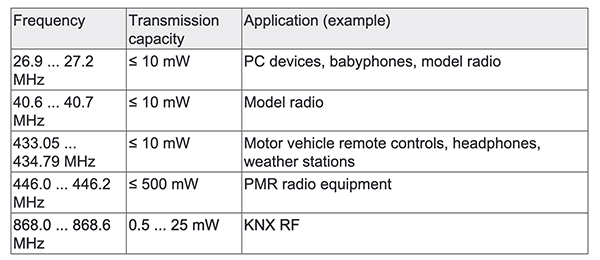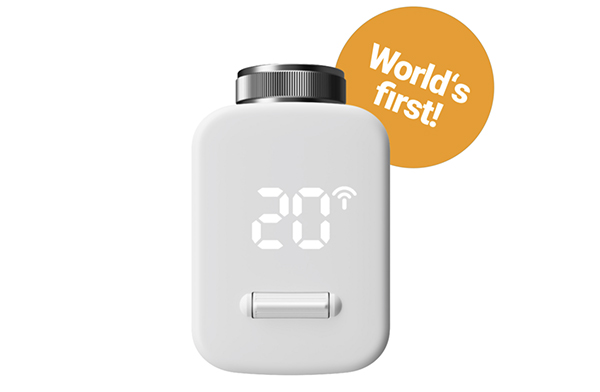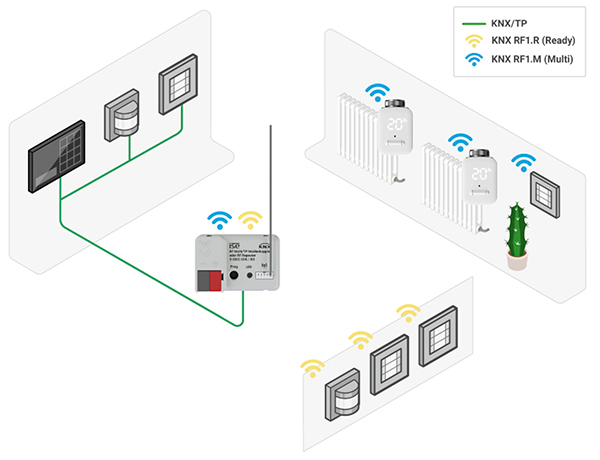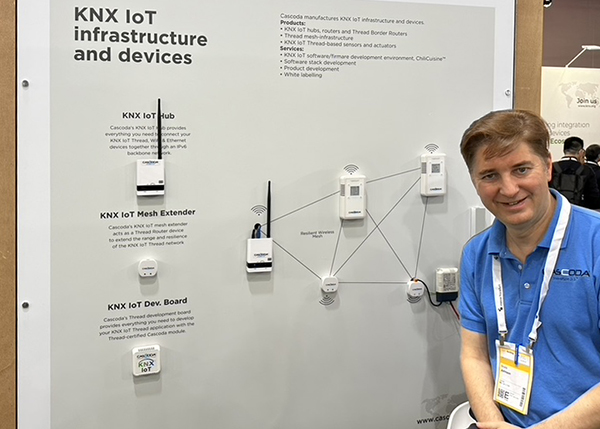
Joost Demarest takes a look at how wireless communication options have developed for KNX from a simple solution in the nineties, to the recent KNX RF extensions, IPv6 networks and Thread.
The development of KNX RF
When installers think of KNX, most of them immediately think of the green cable, the basis for physically exchanging KNX data since the very birth of the KNX system. However, since the middle of the nineties, KNX and its members have extended the KNX media with wireless communication possibilities. For the first version of KNX wireless, namely KNX RF Ready, KNX opted for a single channel approach and for a frequency in a sub-Giga band, i.e. 868MHz. The reason for doing this was the focus on the European market (the 868MHz frequency band is pretty much limited to Europe) and for reaching the maximum possible transmission range – as a rule of thumb: the higher the chosen frequency, the lower the transmission range.

For the first version of KNX wireless, KNX manufacturers also insisted that such products should be configurable without the help of ETS, i.e. via easy installation using plug, touch and play solutions.
KNX RF Multi
In the next decade, and to improve the robustness of installations in the case where the single channel is jammed, more channels were added to KNX RF in the form of up to 3 fast channels and up to 2 slow channels – the latter intended for battery-powered receivers. This is called KNX RF Multi. In addition, acknowledged transmissions (Fast Ack) for up to 64 individual receivers were introduced. If the Ack is missing in the slot attributed to the receiver, telegrams are automatically repeated. Furthermore, all KNX RF Multi devices need to be downgradeable to single-channel RF devices. This is to ensure that KNX installations with exclusively KNX RF single-channel devices can also be extended with newer KNX RF Multi devices.
In recent years and since ETS5, there was an ever-increasing call for configuration support for wireless products also in the ETS, and the system specifications were extended accordingly to allow this.
KNX RF Multi SLE
The very recent extensions to KNX RF relate to the improvement of the power consumption, especially for devices using the slow channels, and to avoid their batteries being depleted too quickly. To support this, the Slow Low Energy (SLE) extension introduced a smarter preamble to ensure that devices can sleep longer. This is achieved by detecting at the start of the telegram whether the message originates from a non-KNX wireless device, or from a neighbouring installation, or otherwise does not address the device.

KNX RF Multi SLE Gap
To further improve energy efficiency, yet another optimisation has been introduced, called ‘Slow Low Energy Gap’, especially for media couplers between Twisted Pair and RF. If a media coupler sends SLE telegrams, then during this time there is no possibility for media couplers to receive any Fast telegrams (‘blind time’). This leads to Fast telegrams that have to be repeated, as the media coupler does not Ack the original Fast frame. As a solution, an SLE transmitter must pause its transmission to be able to detect a Fast Transmission on the channels F1/F2. In the case when a Fast Transmission is detected, an SLE transmitter must interrupt its transmission and try again later. The media coupler also has the possibility to still send the Slow telegram after a certain number of interruptions without any further interruptions.

KNX IoT Point API
Last but not least, since the introduction of KNX IoT Point API allowing KNX communication over IPv6 networks, KNX manufacturers now also have the possibility to develop Thread-based devices. Thread is a wireless mesh solution operating in the 2.4GHz frequency band – a frequency band that can be used worldwide for home automation wireless communication.

To summarise, wireless communication is more than ever a true KNX communication medium.
Joost Demarest is the CTO/CFO of KNX Association, the creator and owner of KNX technology – the worldwide standard for all applications in home and building control.












